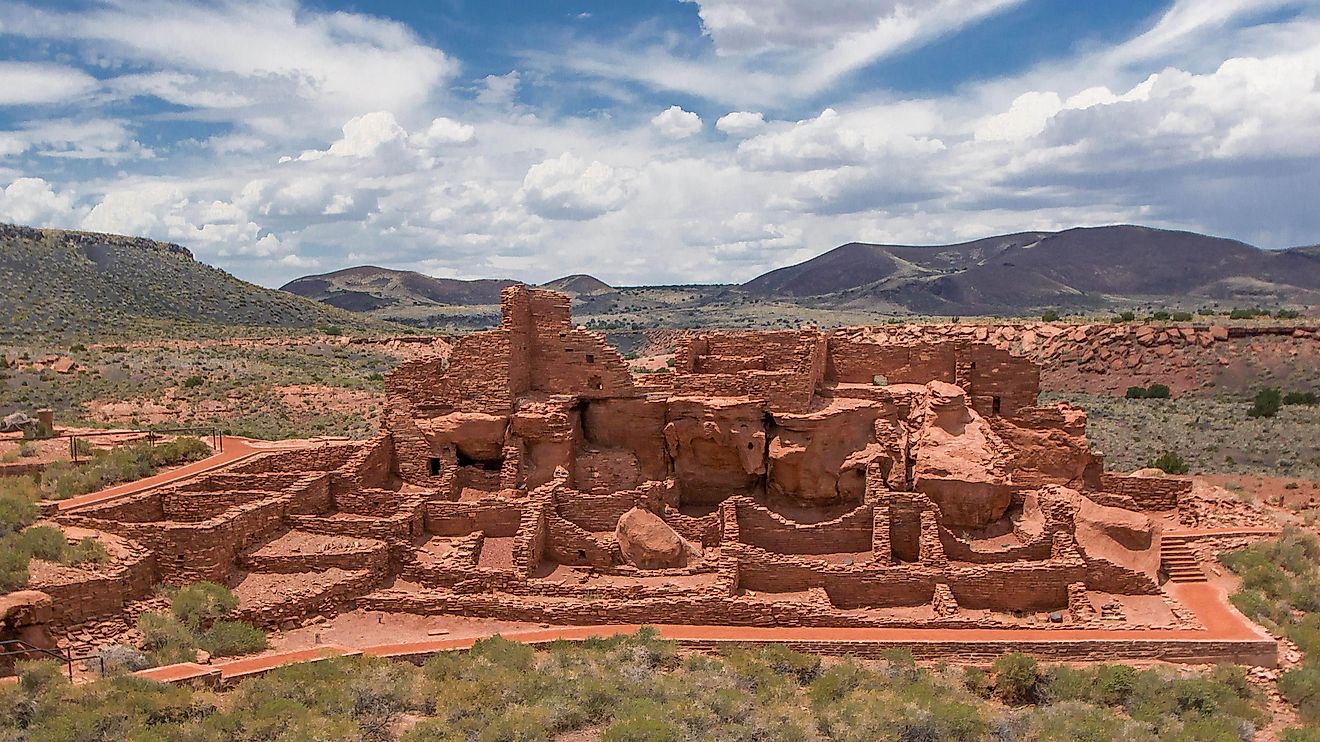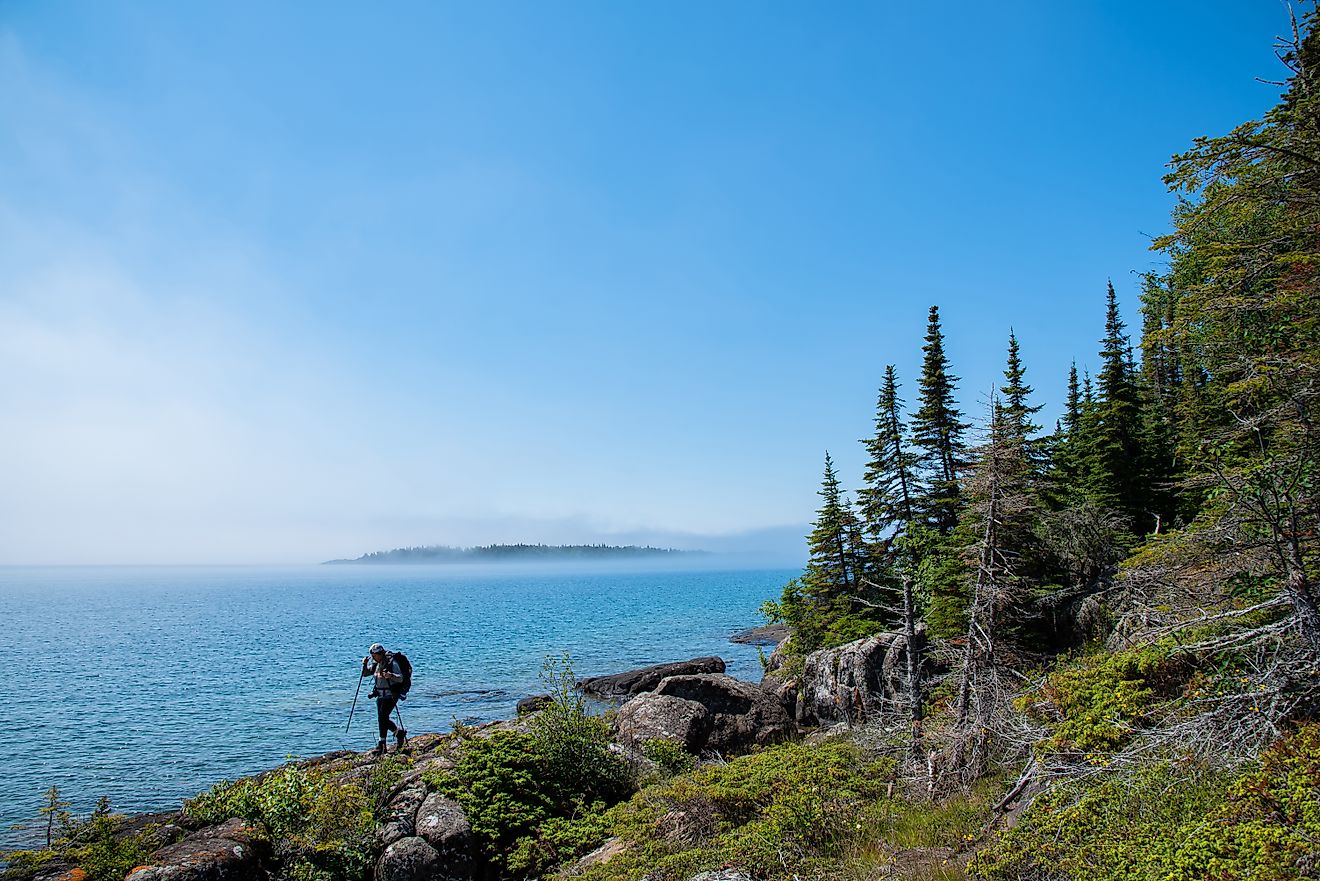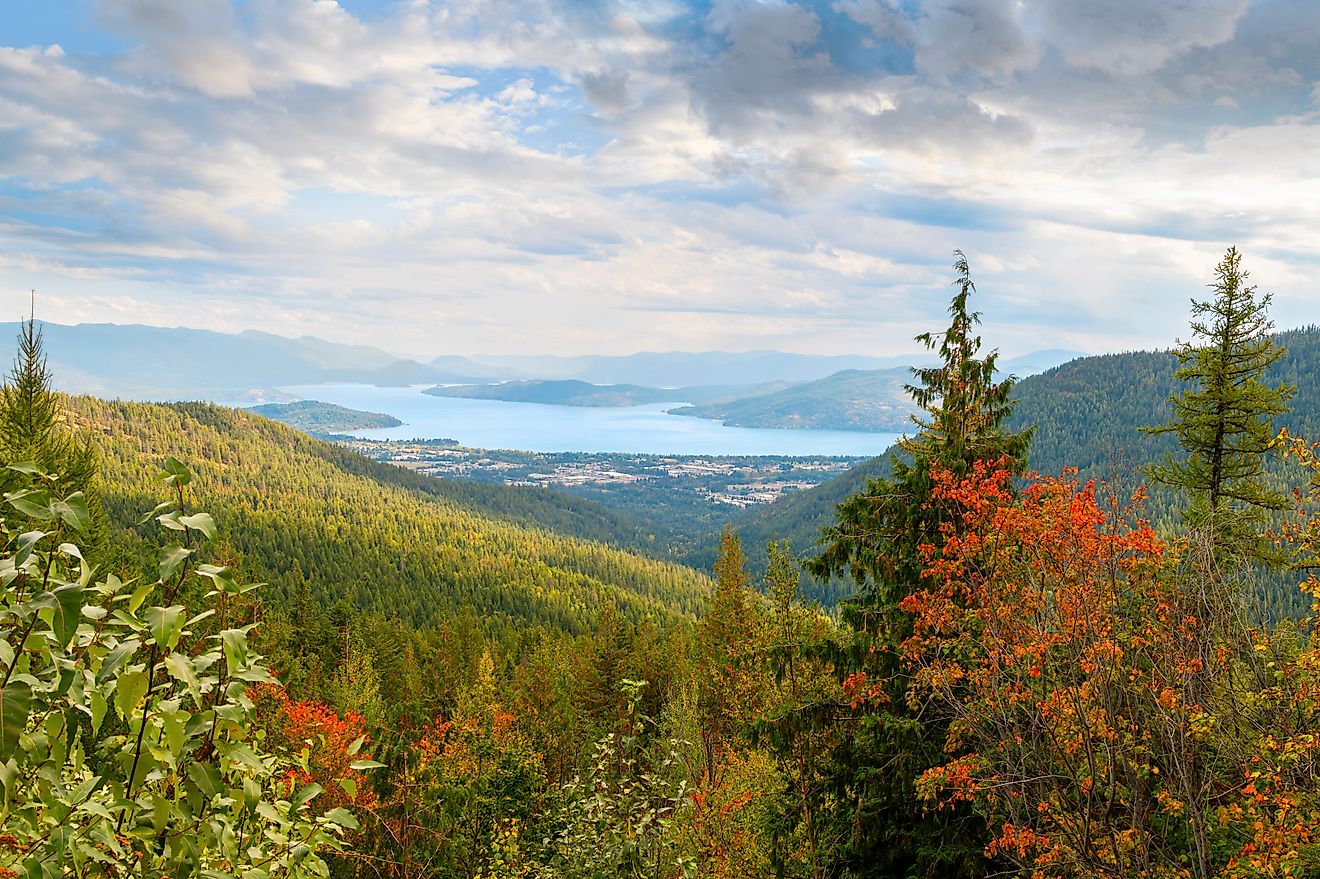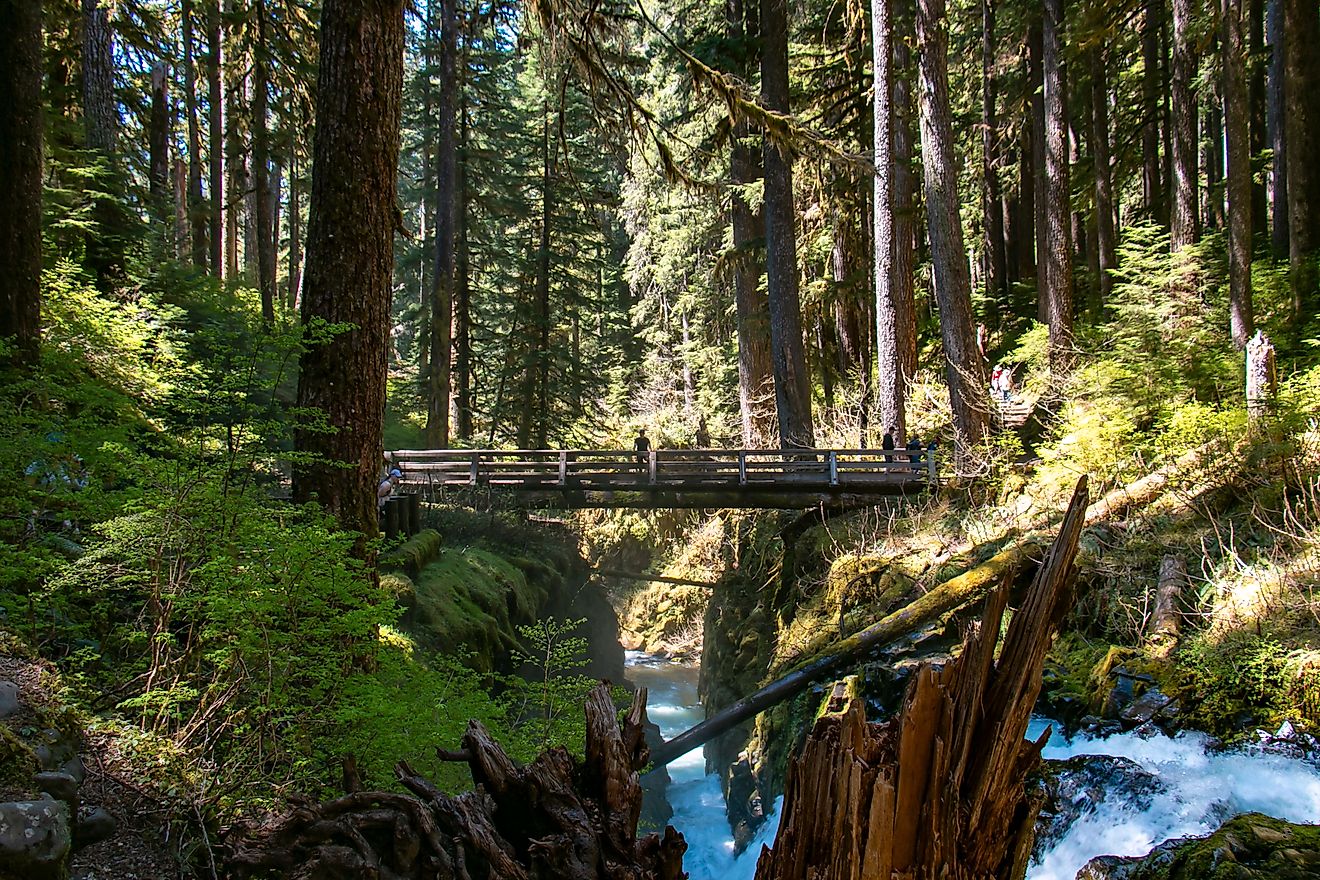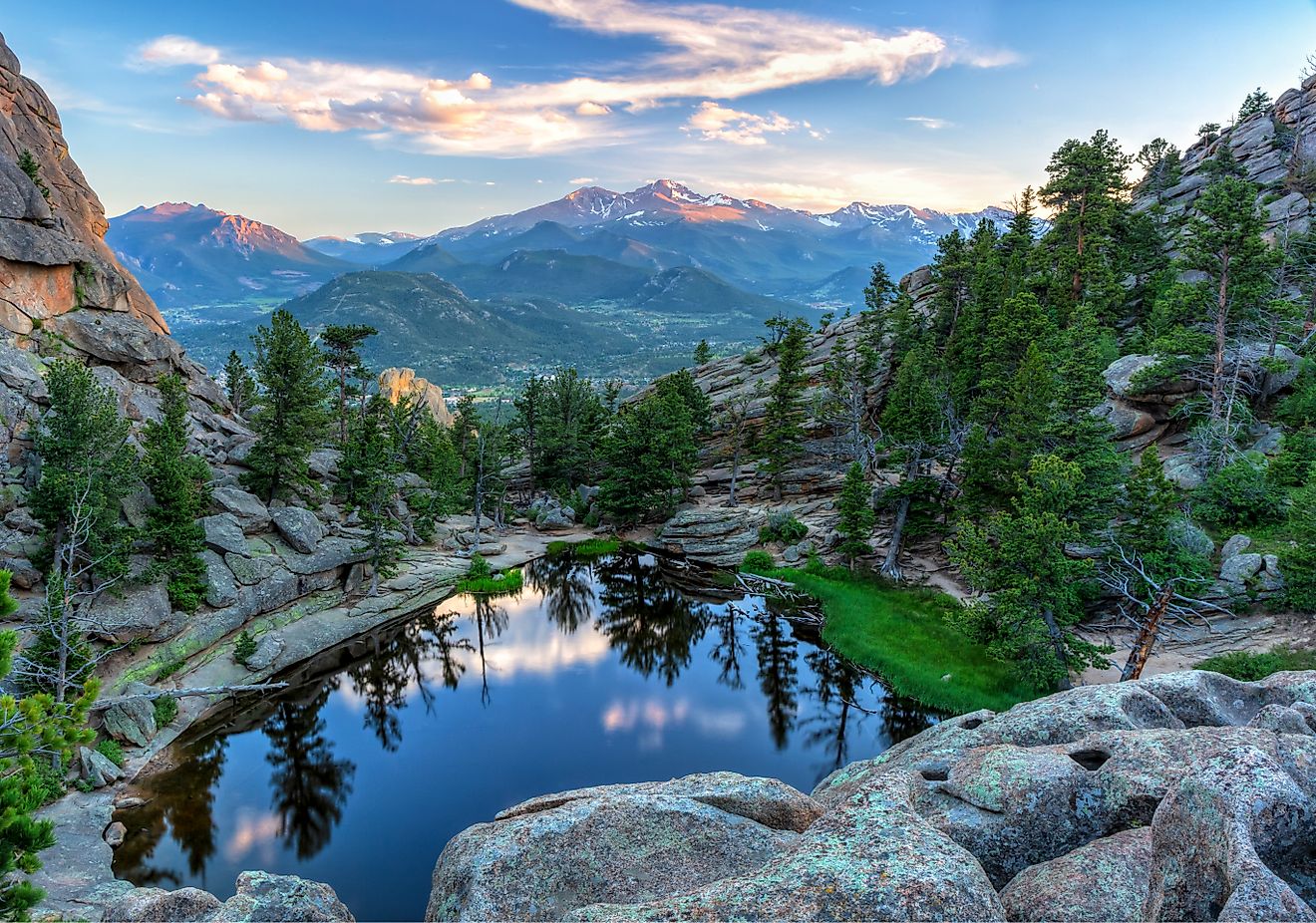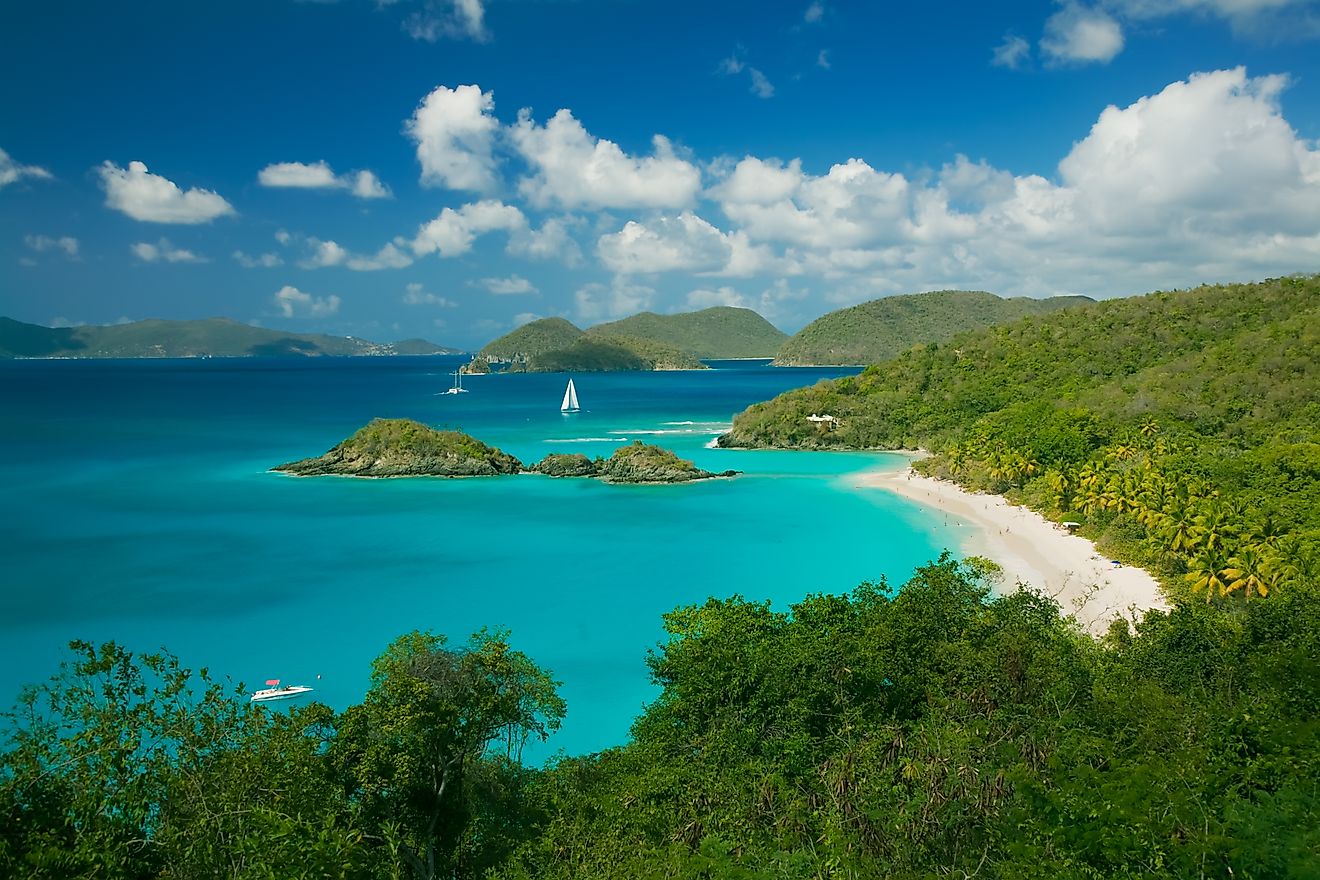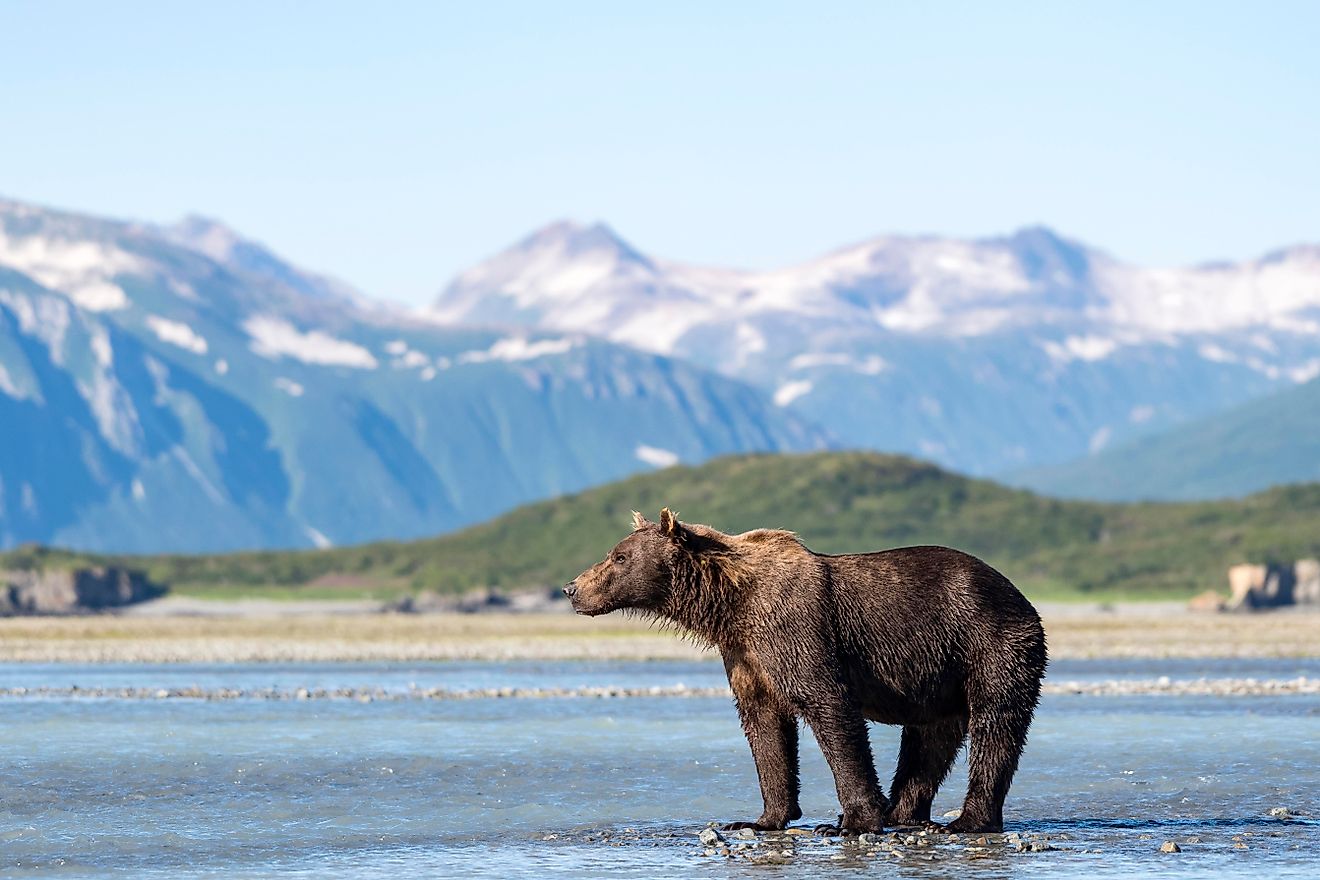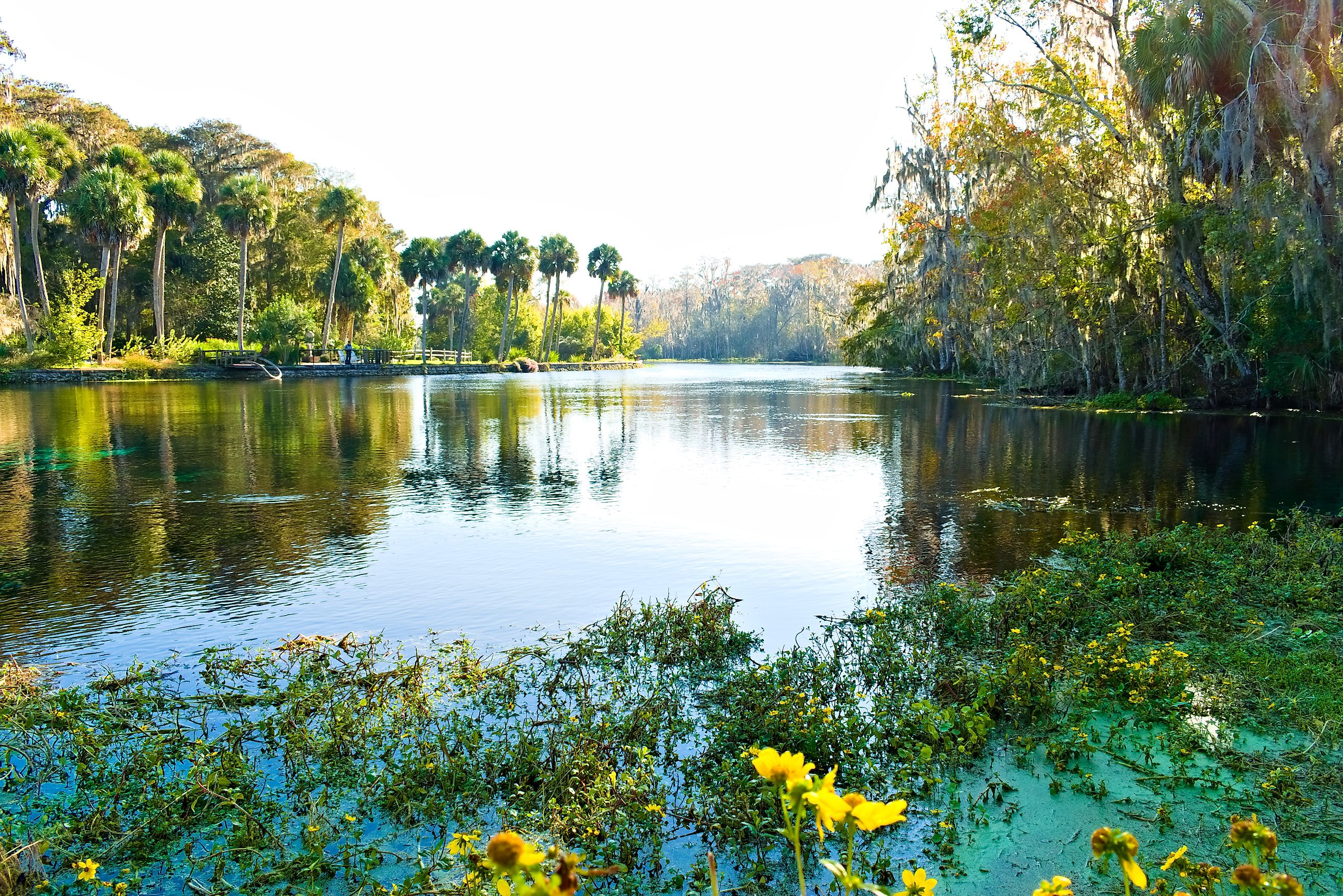
Ocala National Forest: The Oldest National Forest East of the Mississippi River
Ocala National Forest is a place where Florida shows off its wild side. Established in 1908, it is the oldest national forest east of the Mississippi and the southernmost in the continental United States. Spread across 607 square miles of springs, lakes, and endless pine scrub, it offers a side of the Sunshine State far removed from beaches and theme parks.
The name “Ocala,” from a Timucuan word meaning “fair land” or “big hammock,” fits perfectly for a landscape that feels both untamed and inviting. Stretching across Marion, Lake, and Putnam counties, and framed by the Ocklawaha and St. Johns Rivers, Ocala has become one of Florida’s most visited outdoor escapes.
The Geography of a Wild Landscape
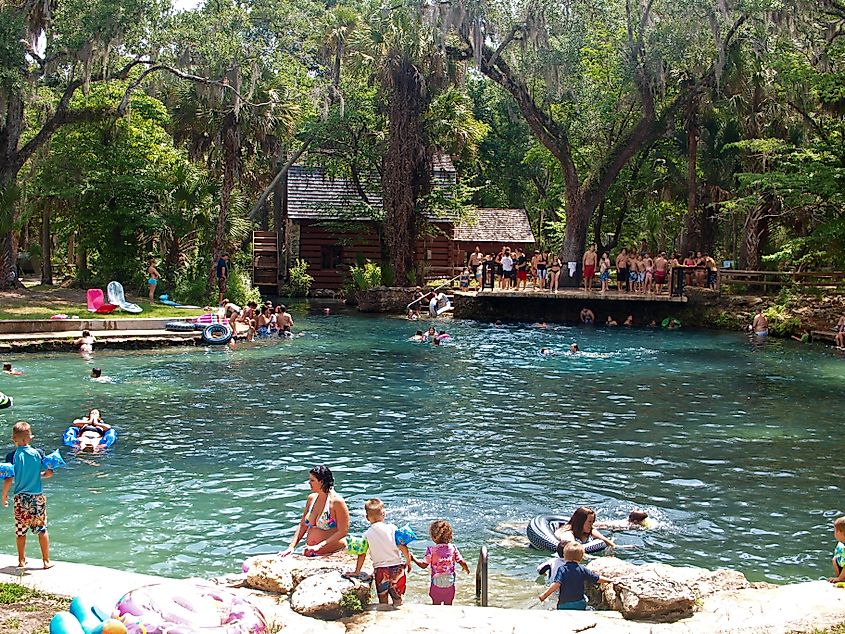
The boundaries of Ocala National Forest hold a fascinating variety of terrain. Within its borders are central highlands, coastal lowlands, swamps, prairies, and hundreds of natural lakes and ponds. More than 600 bodies of water make this one of the most water-rich national forests in the country.
Some of the forest’s most famous spots include Juniper Springs and the Juniper Prairie Wilderness, areas immortalized in literature and film. The Yearling Trail takes you to the filming location of the movie adaptation of Marjorie Kinnan Rawlings’ The Yearling.
Ocala also recharges the Floridan Aquifer, one of the most important underground water systems in the Southeast. Its porous sandy soils allow rainfall to seep deep underground, replenishing the aquifer and sustaining freshwater supplies across Florida.
The Big Scrub: America’s Largest Sand Pine Forest
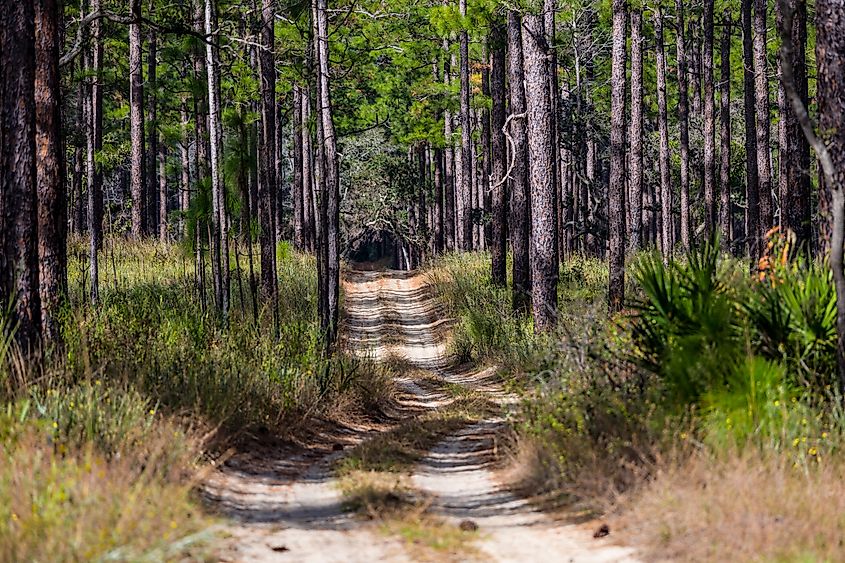
One of the most remarkable features of Ocala National Forest is the Big Scrub, a massive stretch of Florida scrub habitat. Spanning roughly 200,000 acres, it is the largest continuous area of sand pine scrub in the world. This habitat is both harsh and unique, defined by sandy soil, fire-dependent plants, and hardy trees that thrive in tough conditions.
The Big Scrub has long fascinated naturalists and writers. Marjorie Kinnan Rawlings, who lived nearby in Cross Creek, often wrote about the people who settled on the edges of this wilderness. She described the scrub as a “vast wall” that discouraged outsiders. To this day, it remains one of the wildest landscapes in Florida, a place shaped by periodic fires that maintain its delicate balance.
In fact, one of the most infamous wildfires in U.S. Forest Service history took place here. In 1935, a lightning strike ignited a blaze that spread six miles per hour, consuming 35,000 acres in just four hours. This fire reinforced the importance of controlled burns, which the Forest Service still uses today to keep the ecosystem healthy.
Springs That Sparkle Like Gems
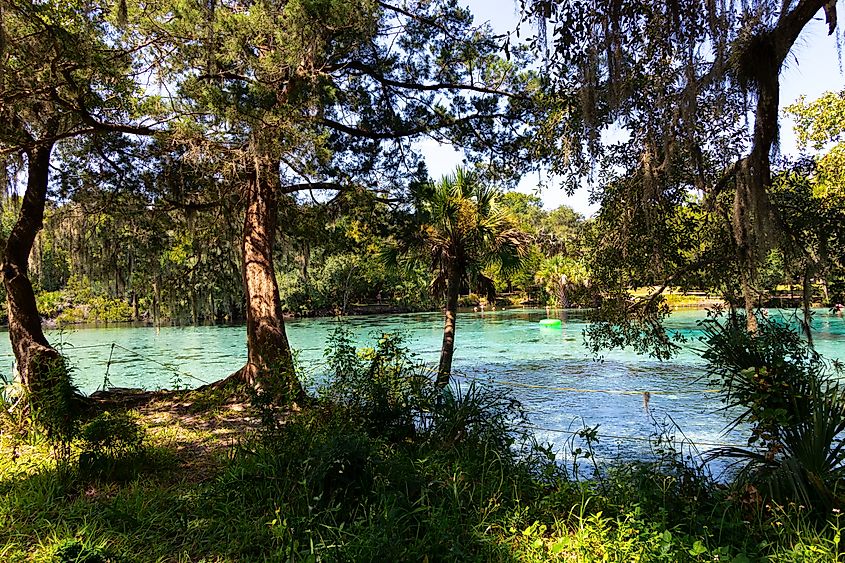
Ocala National Forest is home to some of the clearest, most inviting springs in the state. These natural pools are not just beautiful but also vital for the ecosystem. Constantly flowing at a cool 72 degrees Fahrenheit, they provide habitats for fish, turtles, and aquatic plants while offering refreshing swimming holes for visitors.
-
Juniper Springs: One of the most famous, this spring is surrounded by palm and oak trees. The water is crystal clear, perfect for swimming, canoeing, or snorkeling.
-
Alexander Springs: Designated as a wilderness area, it is one of the few first-magnitude springs in the forest. Its shallow sandy bottom makes it a favorite for families.
-
Salt Springs: Known for its mineral-rich waters, this spring bubbles up into a large basin and supports both freshwater and salt-tolerant species.
The springs also play a role in Florida folklore. Stories of early settlers, bootleggers, and even ancient Indigenous communities surround these waters, giving them a timeless aura that goes beyond their natural beauty.
Wildlife on the Move
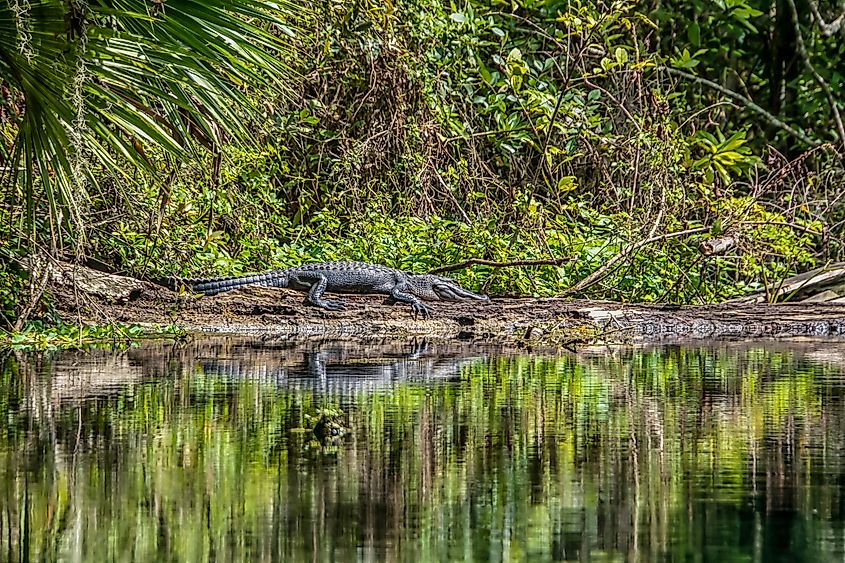
The forest is a stronghold for Florida’s black bear population, which finds refuge among the dense pines and scrub. White-tailed deer often dart through the undergrowth, while the distinctive calls of coyotes echo across the forest at dusk.
Ocala is also home to rarer species. The gopher tortoise, for example, digs extensive burrows in the sandy soil, creating underground shelters that are used by hundreds of other creatures. Manatees can be found in the waterways connected to the forest, especially near the spring-fed rivers. Reptiles thrive here too, with alligators, rattlesnakes, and scrub lizards all adapted to the unique environment.
An unusual presence in the area is a population of Rhesus macaques. These monkeys, originally introduced for a tourist attraction in nearby Silver Springs, have expanded into parts of the forest. While they are not native, they have become an oddly iconic part of Ocala’s wildlife lore.
The Pinecastle Bombing Range

Few national forests have as unexpected a feature as Ocala. Deep in its interior lies the Pinecastle Bombing Range, the only live impact bombing range on the East Coast. Covering nearly 6,000 acres, this site has been used by the US Navy for more than 50 years. Fighter jets such as F/A-18 Hornets regularly train here, dropping thousands of bombs each year, though only a few hundred are live ordnance.
While this may seem unusual for a national forest, the range operates under strict rules. It is fenced off and monitored, ensuring that military exercises do not interfere with the forest’s recreational areas. For many locals, the rumble of jets overhead has simply become part of Ocala’s identity.
A Forest of Lakes

Ocala National Forest is home to more than 600 lakes and ponds, from hidden sinkholes to sprawling Lake George, the second-largest lake in Florida.
Some favorites include:
-
Lake Kerr: A scenic lake with clear waters, ideal for boating and fishing.
-
Lake Bryant: A popular spot for bass fishing.
-
Mill Dam Lake: Known for its sandy beach and family-friendly recreation area.
-
Wildcat Lake: A quieter location for those who prefer a less crowded experience.
These lakes are not just for recreation. They support diverse ecosystems and provide important nesting sites for birds such as ospreys and herons.
Trails Through the Wilderness
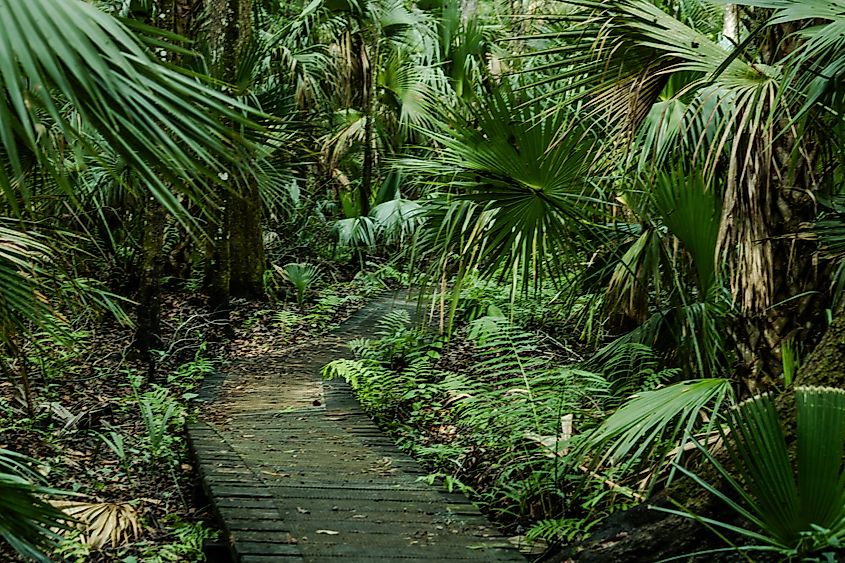
Ocala offers miles of trails that cross forests, wetlands, and prairies. The Florida National Scenic Trail, which runs from the panhandle to the Everglades, cuts straight through Ocala. Hikers can experience everything from shaded hammocks to open scrub along this stretch.
Other trails include:
-
The Yearling Trail: Following in the footsteps of Rawlings’ famous novel, this path passes homesteads and film locations.
-
Lake Eaton Sinkhole Trail: A short walk that leads to a massive sinkhole surrounded by forest.
-
Paisley Woods Bicycle Trail: A 22-mile off-road challenge for mountain bikers.
Horseback riders and off-highway vehicle enthusiasts also find plenty of designated routes. With its mild winters and warm summers, the forest supports year-round activity.
A Glimpse Into the Past: Kerr City
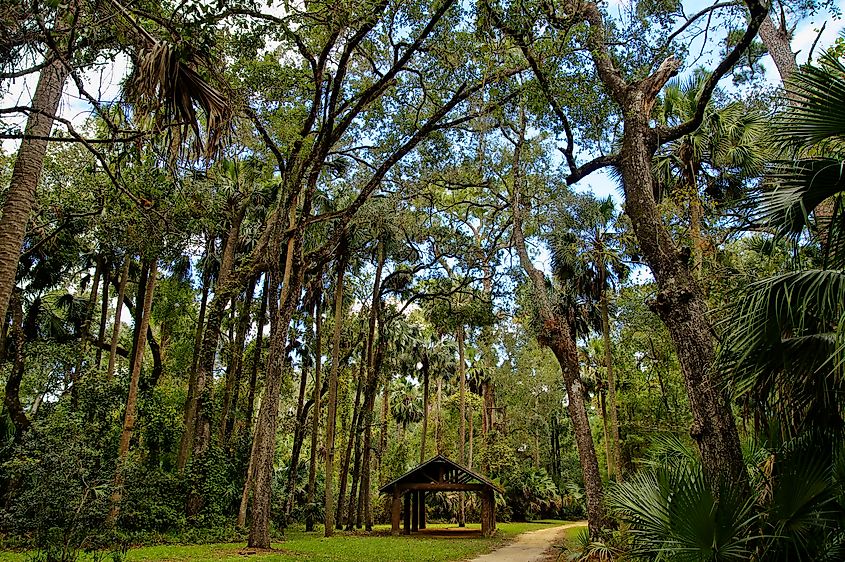
Hidden within the forest is Kerr City, a ghost town founded in the 1880s. Once a thriving settlement, it collapsed after devastating freezes destroyed its citrus groves. Today, weathered structures and scattered relics stand as reminders of a short-lived boomtown. Few other national forests hold such a striking contrast, where ancient scrublands exist alongside the remnants of human ambition and abandonment.
Wilderness Areas for True Solitude
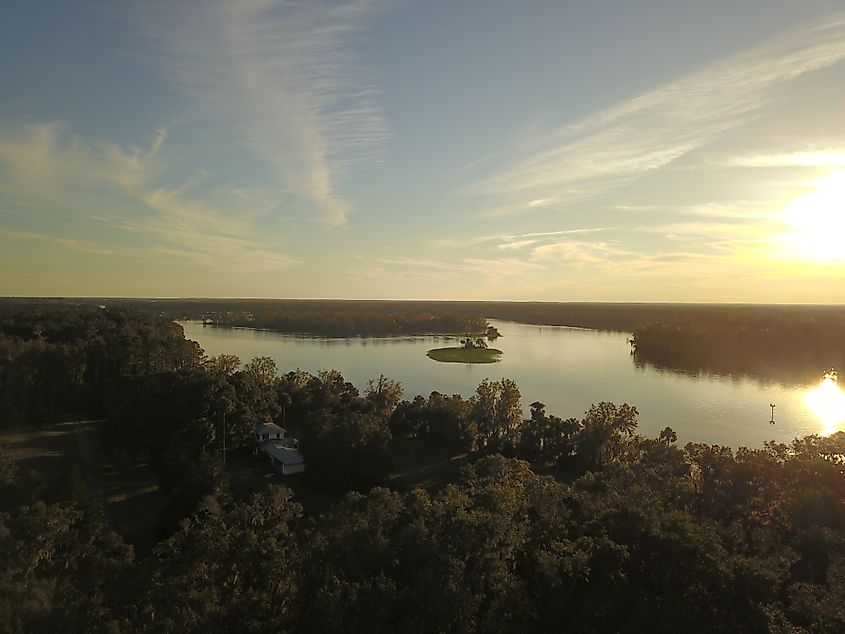
Ocala National Forest contains four federally designated wilderness areas, offering a deeper sense of seclusion. These include the Alexander Springs Wilderness, Juniper Prairie Wilderness, Billies Bay Wilderness, and Little Lake George Wilderness. Each area is protected from development, preserving the landscape in its natural state.
Hiking or paddling into these zones is like entering another world. The silence is broken only by bird calls or the splash of fish. It is here that Ocala shows its wildest, most untouched character.
Ocala’s Place in Florida’s Story
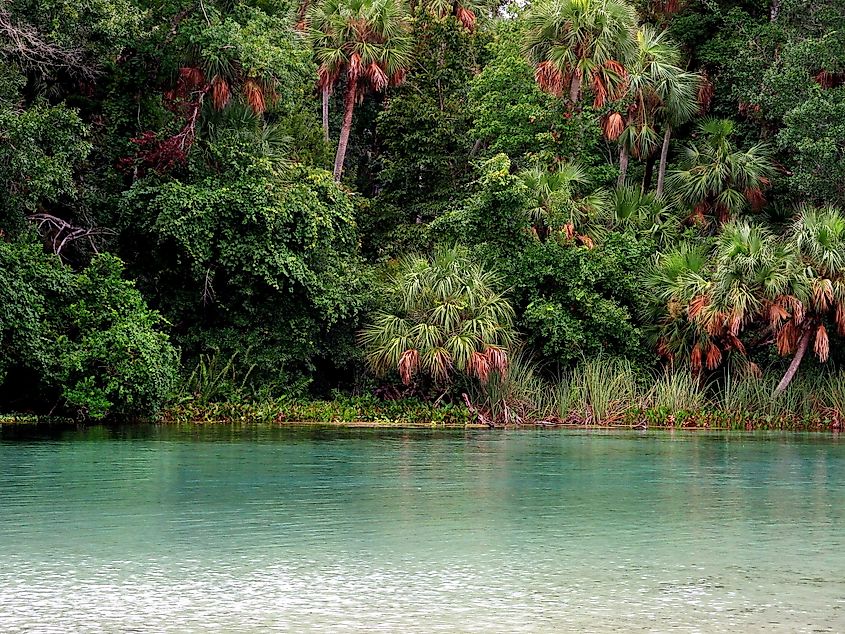
Ocala National Forest is a living archive of Florida’s natural and cultural history. Its sandy scrublands, longleaf pine forests, and spring-fed lakes provide refuge for rare plants and wildlife while sustaining the Floridan Aquifer. The forest’s trails, waterways, and historic sites offer glimpses into the lives of settlers, writers, and generations who have shaped the region. Each corner of Ocala tells a story, from the quiet remnants of Kerr City to the shimmering waters of Juniper Springs. More than a protected landscape, it is a symbol of resilience and continuity, preserving the wild character of Florida for science, recreation, and inspiration.
Quick Facts About Ocala National Forest
-
Location: North Central Florida, spanning Marion, Lake, and Putnam counties
-
Size: 607 square miles
-
Established: 1908, making it the oldest national forest east of the Mississippi River
-
Unique feature: Southernmost national forest in the continental United States
-
Nickname: Known for “The Big Scrub,” the largest sand pine scrub forest in the world
-
Lakes and ponds: Over 600 natural lakes and ponds, including Lake George and Lake Kerr
-
Springs: Famous for Juniper Springs, Alexander Springs, and Salt Springs
-
Wildlife: Highest population of Florida black bears, plus alligators, manatees, gopher tortoises, coyotes, deer, and even non-native Rhesus macaques
-
Ecosystem: Home to rare longleaf pine, sand pine scrub, and fire-dependent habitats
-
Recreation: Hiking, swimming, camping, canoeing, fishing, mountain biking, horseback riding, and off-highway vehicle trails
-
Trails: Florida National Scenic Trail, Yearling Trail, Lake Eaton Sinkhole Trail, Paisley Woods Bicycle Trail
-
Military use: Pinecastle Bombing Range, the only live impact range on the East Coast, located within the forest
-
Historic site: Kerr City, a ghost town from the late 19th century
-
Designated Wilderness Areas: Alexander Springs, Juniper Prairie, Billies Bay, and Little Lake George
